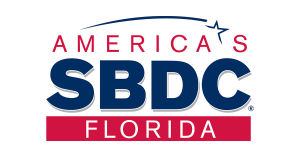Examination of cash flow will help avoid problems during slow times
BY NANCY DAHLBERG
 High water covers all stumps is a great visual to describe a business owner’s way of thinking when sales are strong and cash is flowing, according to Michael Bernard, certified business consultant with the Florida Small Business Development Center at Indian River State College.
High water covers all stumps is a great visual to describe a business owner’s way of thinking when sales are strong and cash is flowing, according to Michael Bernard, certified business consultant with the Florida Small Business Development Center at Indian River State College.
“Sometimes, it takes receding water to expose the dangers of a slowing market and awaken a business owner to the importance of healthy cash flow.”

Michael Bernard’s consulting experience comes from his work with several international accounting firms in their management consulting departments working with Fortune 500 companies throughout the United States. He has also worked for several local and regional accounting firms as both a manager and principal in charge of their consulting operations in the South Florida area before opening his own management consulting company in Miami.
To effectively manage cash flow, the business owner will need to review and examine the balance sheet and income statement line by line and drill down into all aspects of the business, including sales, payables, receivables, inventories and expenses.
Cash flow should be a regular managerial exercise, not crisis-driven, only to be performed during recessions or global pandemics, Bernard says.
“As many owners, managers and entrepreneurs fight for the very survival of their business, it is critical that a close examination of cash flow is conducted.”
A small business owner can Google and find any number of tips about managing cash flow, but merely pulling one or two of these levers and thinking that’s all you need to do is not going to get you there. There’s no one magic bullet. It would be best if you looked at all areas of your business.
With that in mind, the business owner needs to examine new and multiple channels to generate cash. This examination starts with seeking out sales that increase cash flow. Always keep an eye on your gross margins to create more revenue with fewer sales.
Now is also the time to explore and develop new revenue streams to bring more money in the door. A Treasure Coast seller and distributor of advertising specialties began distributing and selling hand sanitizer and masks. Restaurants turned parking lots into seating areas to maintain occupancy numbers while adhering to social distancing guidelines.
“The business owners must get out of their comfort zone and get creative,” Bernard says. “With new products, services, and creative delivery channels, a business has the opportunity to build stronger and more loyal customer relationships.”
Efforts should also be made in renegotiating rents and other contracts, if possible. Deals for lower rent could be negotiated for a limited period by agreeing to a lease extension.
Cash flow can be increased through the restructuring of bank debt. Banks find themselves needing to do this again, something they haven’t experienced much since the Recession of 2008.
All of this is happening while operating costs are increasing for many small businesses. Expect your insurance premiums to go up, for instance. So as you go line by line, on your financial statements, you have to ask yourself, what does each decision cost, and what is the benefit it will bring?
Here are some additional ways to generate cash:
• Review your gross margins and see how they can be improved through pricing or COGS savings.
• Improve discounts for larger sales quantities.
• Negotiate long-term contracts with fewer, higher quality suppliers.
• Subcontract low-skill elements to lower-cost suppliers.
• Can you redesign your product to reduce your costs without lowering quality?
• Open new, shorter, less costly distribution channels.
• Introduce new technology to reduce sales costs and improve efficiency.
• Sell off obsolete or slow-moving inventories.
• Establish an inventory line of credit with your bank.
• Collect your A/R aggressively. Get to know the account clerks — learn the chain of approval for payment from each customer. Stay on top of any late payers — is there a sense of urgency?
• Initiate an accounts receivable line of credit.
• Contract with a collections agency for old accounts receivable.
• Start charging interest or fees for late payments.
• Consider offering discounts to incentivize prompt payments.
• Consider asking for payments upfront and the final amount at delivery.
• Consider upfront payments for customized orders.
• Revamp your invoicing system if needed. Make it easier for your client to understand the invoice and payment process.
• Buy used equipment or lease the equipment.
This article is provided by the Florida SBDC @ IRSC, the Small Business Development Center within Indian River State College’s School of Business. The center’s team of business experts works one-on-one with hundreds of entrepreneurs and business owners each year by providing confidential, no-cost consulting. The center’s mission is to help Treasure Coast businesses grow and succeed.
See the original article in the print publication
Treasure Coast Business is a news service and magazine published in print, via e-newsletter and online at tcbusiness.com by Indian River Magazine Inc. For more information or to report news email staff@tcbusiness.com
